In the late 1930’s, when the United States was still in throes of the Great Depression, President Franklin D. Roosevelt enacted various economic programs focusing on recovery called the New Deal. One of the new federal agencies established by the New Deal was called the Resettlement Administration, a group that focused on building relief camps for migrant workers and refugees from the droughts in the southwest. A photography project to document the work was established, and when the Resettlement Administration later became the Farm Security Administration, the documentary photography project was expanded. Under the leadership of Roy Stryker, the FSA photographers captured some very iconic images of American life during and after the Depression, or as he said “introducing America to Americans.”
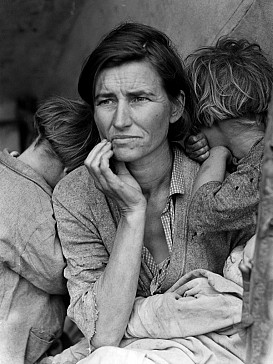 Â
 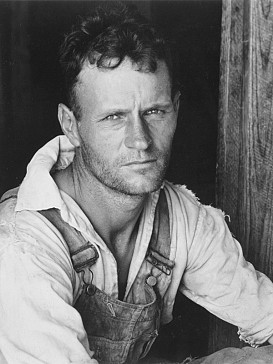
Typical photos from the Farm Security Administration photo documentary project – Migrant Mother by Dorothea Lange at left, and Sharecropper by Walker Evans on the right.
While the Farm Security Administration photographers captured many images of Americans struggling through tough times, you may be surprised to note that not all of the photos were of farmers and migrant workers, or even poverty. The FSA’s photo archives contain many images of just regular American life between the years 1935 and 1944 – including several shots in Grand Central Terminal. Two particular photos, captured by visual anthropologist and FSA photographer John Collier, are quite iconic, and have even used on video boards in Grand Central Terminal advertising its upcoming centennial.
Below you’ll find some of Collier’s photos from Grand Central, including the two more famous ones, all taken in October of 1941. It is pretty cool to compare the first and second photos in the set – the first is the fairly famous capture, while the second is of the same people in the Terminal, just from the other side. The angle – with the sun shining in from the windows, illuminating the people and casting long shadows – really made the shot.
Now when I said that the Farm Security Administration photographers endeavored to capture views of American life, I totally meant it. Undoubtedly, the photographers could have spent the entire day wandering around Grand Central, capturing the various people walking in and out of the Terminal and call it a day. But the FSA, they didn’t work that way. Collier went beyond Grand Central and followed some commuters home – snapping photos of them in the bar car, playing cards on the train, or just reading the newspaper. For one particular commuter, an unidentified advertising executive from Westport, Collier captured the man’s breakfast with family, photographed him running out the door to make the 7:40 train, and even snapped the moment he kissed his wife goodbye at the station. The following photos are truly a gem – illustrating not just an American life, but the life of a commuter to Grand Central in the early 1940’s.
Scant months after the above two sets of photos were taken, the large east windows of the Terminal were completely covered with a massive photo mural paid for by the Treasury and advertising war bonds and stamps. The mural not only used photos from the Farm Security Administration’s collection, but was documented from start to finish by the FSA photographers. Dedicated in December of 1941, the mural was claimed to be the largest photo mural in the world, measuring 96 by 118 feet.
Visible on the mural was the following text:
That government – by the people shall not perish from the Earth. That we may defend the land we love. That these may face a future unafraid. That we may build for a better world. Buy defense bonds and stamps now!
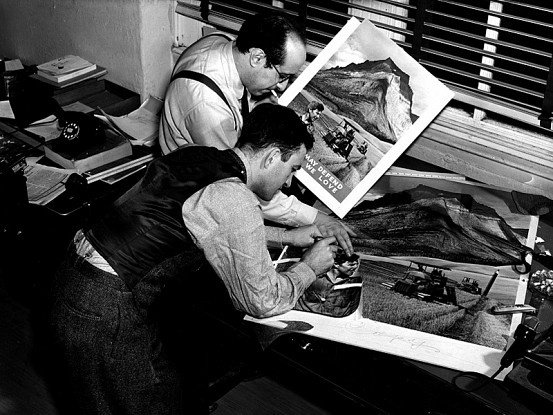
Artists in Washington DC plan the mural to be put up in Grand Central
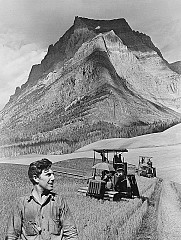
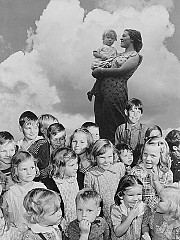 Â
 
Three of the main FSA photos used in the mural. A total of 22 different Farm Security Administration photos were used.
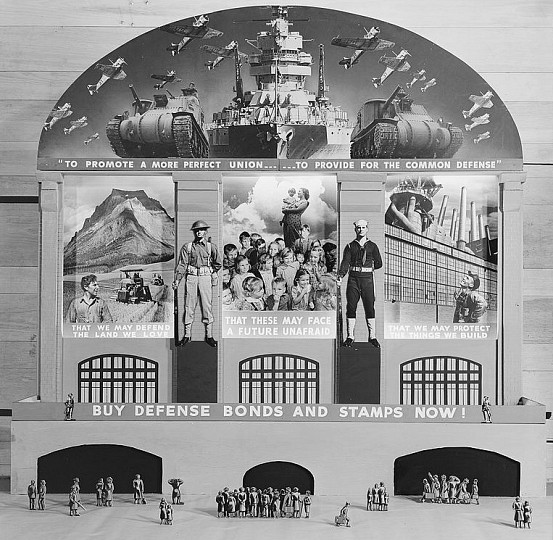
Scale model of what the mural would look like installed in the Terminal. Note that the text is slightly different than what was actually used.
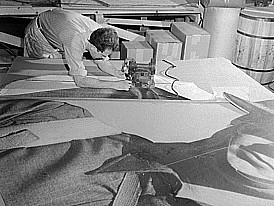 Â
 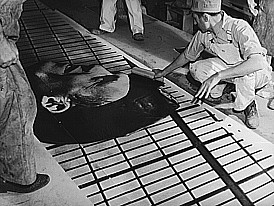 Â
 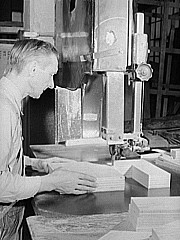 Â
 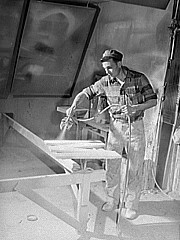 Â
 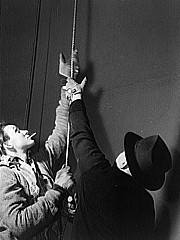 Â
 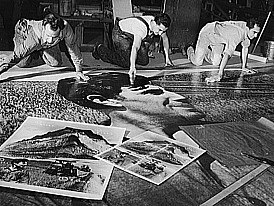 Â
 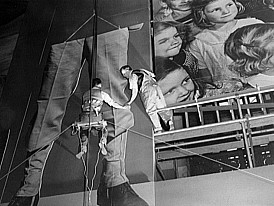 Â
 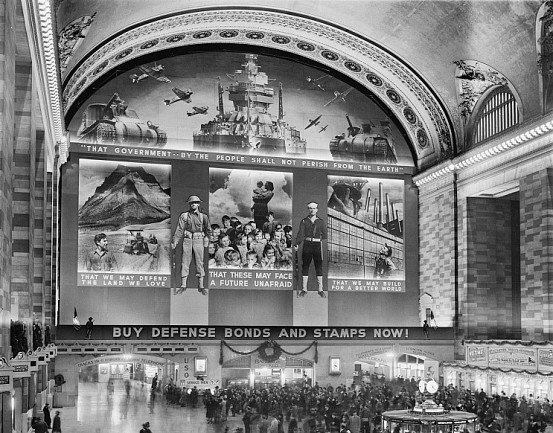
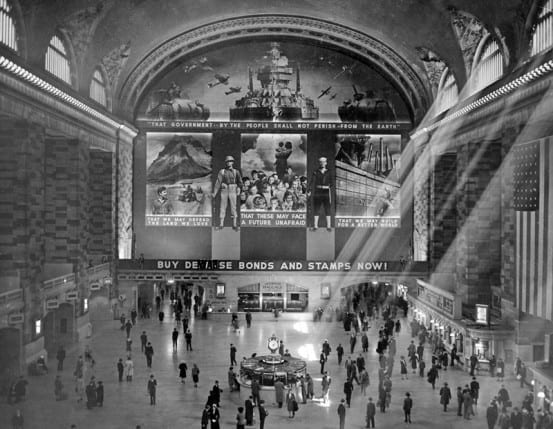
When the mural was originally planned, the United States had not yet entered into World War II. Work for the mural had begun at least three months prior to its installation, though it was dedicated in December – just days after the attack on Pearl Harbor. At some point, assumedly sometime after the US entered the war, the sign was changed to say “War Bonds” as opposed to “Defense Bonds,” which is visible in this photo (it was hard to read – “war” is written in black, covering over the “defense” written in white).
After the US entered the war, the FSA’s photography unit was reassigned to the Office of War Information, and then a year later, disbanded. Collier remained with the photography project when it was transferred to the OWI before leaving in 1943. His mentor, and fellow FSA photographer Dorothea Lange opted for a job with the War Relocation Authority. Lange captured hundreds of Japanese Americans as they were rounded up and sent to internment camps during the war, where her depictions of reality were at odds with her employers. In the government’s desire to gloss over the fact that we too operated concentration camps during the war, the photographs were confiscated and only recently uncovered.
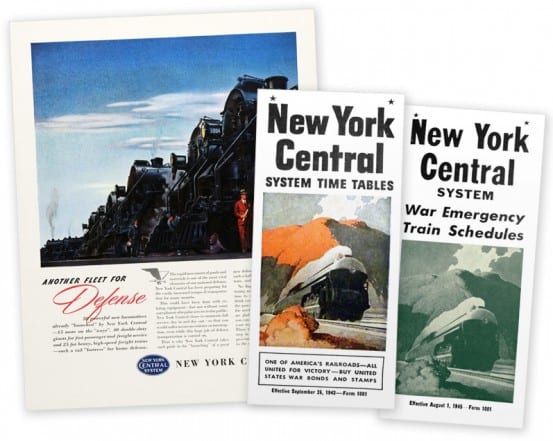
The railroads were quite involved in the war effort – through advertising, and the movement of troops and supplies.



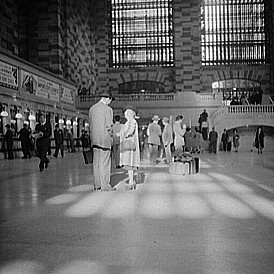
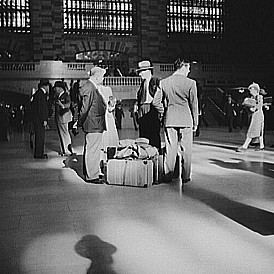
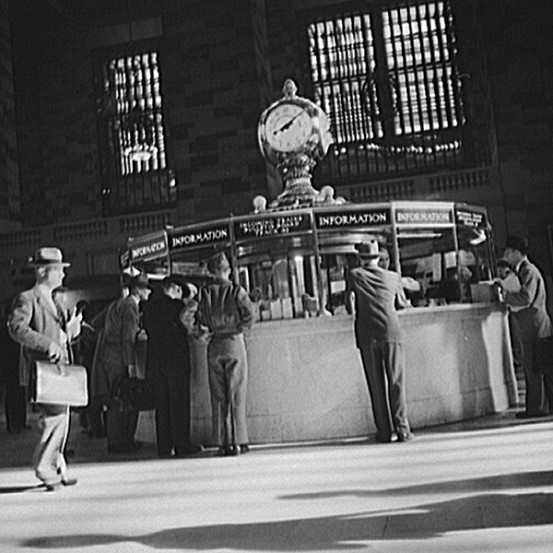
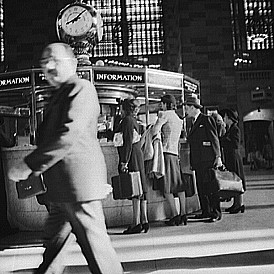
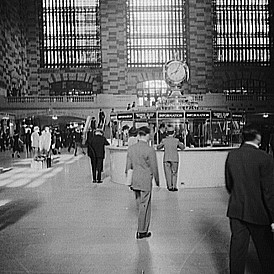
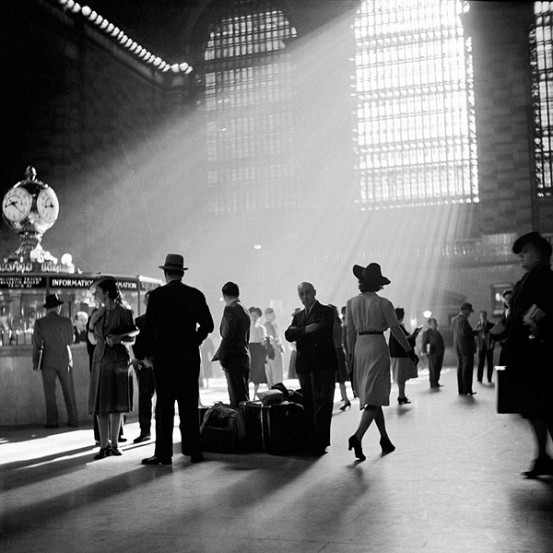
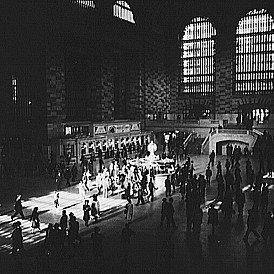
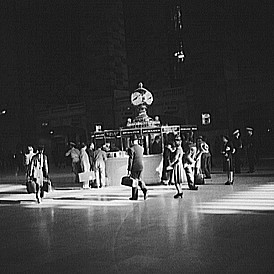
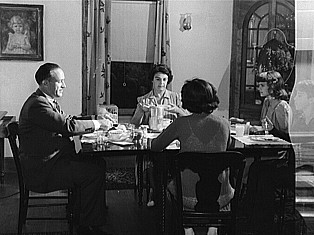
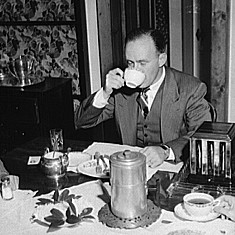

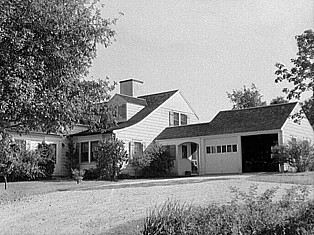
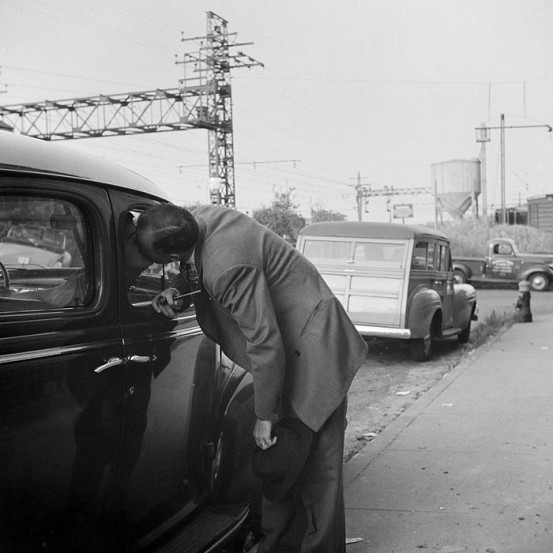
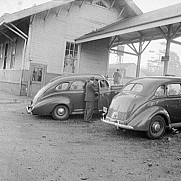
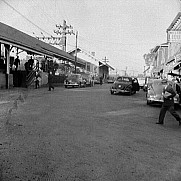
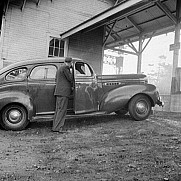
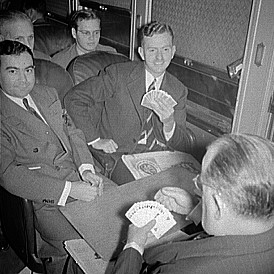
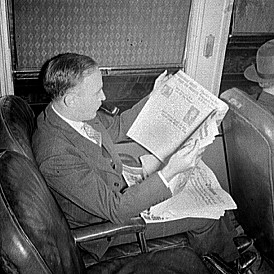
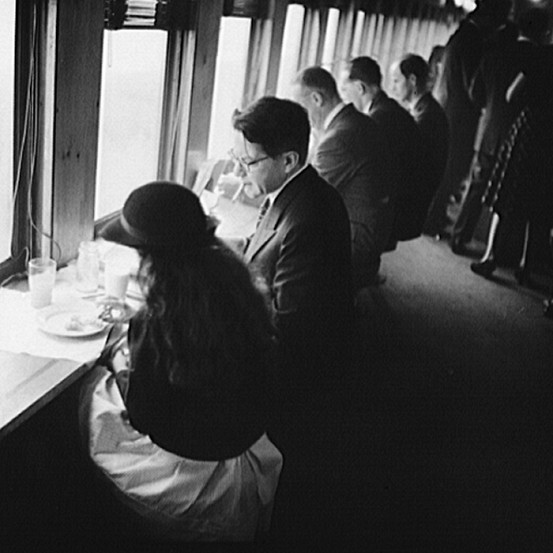
Great stuff (as usual).
I was familiar with Lange and Evans but not John Collier (more properly John Collier Jr. so as not to be confused with his father). I was curious to learn how that sequence of commuter photos was published (it seems like something LIFE magazine would do) but, so far, I haven’t found that out. In the meantime, more about Collier can be found on the website of the The Maxwell Museum of Anthropology in Albuquerque.
(As I’m sure you know, the complete description of one of the above pictures is, “Family breakfast at 7:15 a.m. just before the head of the house dashes for the 7:40 commuter special from Westport, Connecticut”.)
Was this display the precursor/inspiration for the huge Kodak ad that later dominated the terminal?
I dunno about inspiration… Railroads seemed to enjoy boasting about helping out in the war, so this seems almost like a feather in their cap. The Colorama was almost like desperation for any ad money they could scrounge up.
You can read all about the Kodak Coloramas here. They were displayed from 1950 to 1990. I remember them (well, some of them) well.
Absolutely fascinating! I could stare at the pictures of GCTerminal filled with people from the 40s for ages.
Interesting the war photo’s of the sun coming through the windows, I wonder when they were painted black (wartime blackout).
I remember I think it was in the 1980’s when the black out paint was removed from those windows allowing natural light in for the first time in decades.
Most of them were in December of 1941, only a week or two after the attack on Pearl Harbor, so likely that hadn’t happened yet!